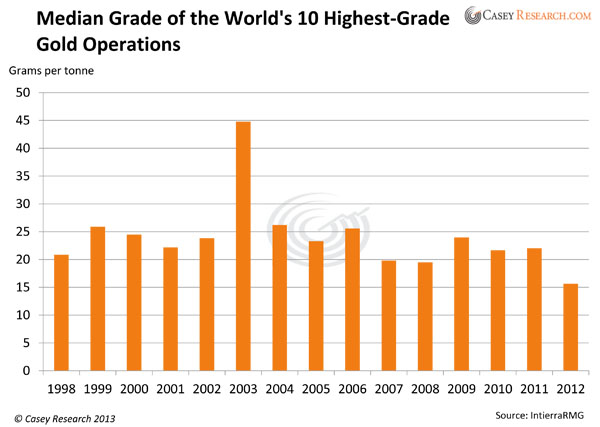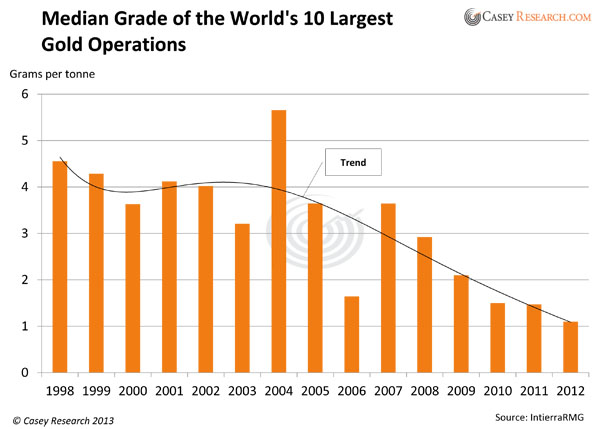Gold Grade Is King



We use cookies (including third-party cookies) to remember your site preferences, to help us understand how visitors use our sites and to make any adverts we show on 3rd party sites more relevant. To learn more, please see our privacy policy and our cookie policy.
To agree to our use of cookies, click 'Accept' or choose 'Options' to set your preferences by cookie type.



Doug Casey is a world-renowned investor and author, whose book Crisis Investing was #1 on the New York Times bestseller list for 29 consecutive weeks, a record at the time.
He has been a featured guest on hundreds of radio and TV shows, including David Letterman, Merv Griffin, Charlie Rose, Phil Donahue, Regis Philbin, NBC News, and CNN; and has been the topic of numerous features in periodicals such as Time, Forbes, People and the Washington Post.
His firm, Casey Research, LLC., publishes a variety of newsletters and web sites with a combined weekly audience in excess of 200,000, largely high net worth investors with an interest in resource development and international real estate.
See full archive of Doug Casey articles
Please Note: All articles published here are to inform your thinking, not lead it. Only you can decide the best place for your money, and any decision you make will put your money at risk. Information or data included here may have already been overtaken by events – and must be verified elsewhere – should you choose to act on it. Please review our Terms & Conditions for accessing Gold News.

We use cookies to remember your site preferences, record your referrer, improve the performance of our site and to make any adverts we show on 3rd party sites more relevant. For more information, see our cookie policy.
Please select an option below and 'Save' your preferences.
You can update your cookie preferences at any time from the 'Cookies' link in the footer.
You have not been active for some time.
For your security you will be logged out in minutes unless you take action.